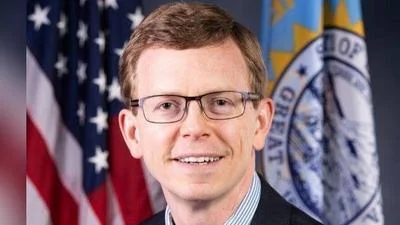Meeting | Gabrielle Henderson (Unsplash)
Meeting | Gabrielle Henderson (Unsplash)
It was an interest in solving little riddles and puzzles, which became a quest to make really difficult puzzles that inspired Dr. Mark Spanier’s interest in cryptography.
Cryptography is the effort to try to secure information, explained Spanier, Associate Professor in The Beacom College of Computer and Cyber Sciences.
“It’s taking some plain text information and trying to scramble it up and secure it,” he added.
“The actual theory part of cyptography stems from mathematics,” Spanier said. “When it comes to the actual full implementation, it also includes computer science and electrical engineering.”
Cryptography is thought to have originated with the Egyptians thousands of years ago, according to Spanier. Julius Caesar created a cipher for military use, and in the 20th century, cryptography was significant in World War I and World War II communications.
By the 1970s, there was a big boom of cryptography activities at the dawning of the digital age with algorithms designed for modern systems, Spanier said, but the basic intent has remained constant over the centuries
“What’s fun about cryptography is that the main problem statement doesn’t really change at all,” he said. “You have two different parties trying to communicate over some network that may have other people intercepting things.”
This means that the person sending the message will encrypt it based on the rules sent by the other party, and then send it across the same channel. The receiver will then run it through a decryption process.
At DSU, many of the students interested in the Mathematics: Cryptography Specialization degree also major in Computer Science, Cyber Operations, or, recently, Artificial Intelligence (AI).
The pairing of cryptography and AI is beneficial because the security of AI is sometimes an afterthought, Spanier said. With this combination, students will be able to bring a proactive aspect to the industry.
“When they sit down at a future meeting, they can start injecting some of these security aspects at the development level,” he said.
Students will do well in these careers if they are interested in math and creativity and are prepared for hard work in this evolving field.
One pending evolution is quantum computing. The industry is discussing the future of cryptography post-quantum, because as quantum computing develops, the cryptography currently being used will become obsolete.
“Quantum computing hasn’t gotten to the stage where it can break all the codes, but it’s going to happen,” Spanier said.
The National Institute of Standards and Technology (NIST) put out a call to cryptographers in 2016 to develop and test encryption methods that could be used in a post-quantum computer world. Over the summer, NIST announced that it had selected its initial quantum-resistant algorithms, according to its website. Additional algorithms are under consideration to provide a “robust variety of defense tools.”
The new post-quantum encryption methods will be implemented in a phasing roll out, Spanier explained, but is all part of the cryptography puzzle that can provide students with exciting and challenging opportunities.
Original source can be found here.


 Alerts Sign-up
Alerts Sign-up